I recently decided to take a break and visit my hometown, Satara, with no specific plans except celebrating Rakshabandhan with my family. However, casually scrolling through my phone one lazy afternoon I found an unexpected adventure. I stumbled upon a headline in the newspaper, “Manyachiwadi—Maharashtra’s First Solar Village.” I was instantly curious. What makes a small village, just 75 km from Satara, a leader in sustainable living? With a spark of interest and a quickly planned day trip, I set off to explore Manyachiwadi and uncover its story.
A Visionary Village
Manyachiwadi is often called an ideal village, and for a good reason. Since establishing its Gram Panchayat in 2001, the village has received 76 awards, with its first in 2005. It is a model for sustainable development, frequently visited by leaders from other villages aiming to replicate its success. The village has effectively implemented environmental programs like waste management, proper drainage, and continuous water supply. However, what truly sets Manyachiwadi apart is its innovative solar energy project. Initially started due to frequent power cuts, the village now strategically installs solar panels based on consumption patterns, ensuring efficient energy use and minimal waste. This approach has made Manyachiwadi Maharashtra’s first solar-powered village.
The village has effectively implemented environmental programs like waste management, proper drainage and continuous water supply.
The Start Of Our Journey
The day before my visit, I asked my relatives if anyone wanted to join me. To my surprise, my 81-year-old grandfather, a retired army soldier, was the most enthusiastic. Despite my mother’s worries about the heat and the amount of walking involved, my grandfather was eager to join. However, he later realised that a full day of exploring might be too tiring. In the end, it was just my cousin and I who set off to explore.
A Beautiful Drive
We left early in the morning, driving through scenic highways and lush, green mountains. The journey was breathtaking, and I couldn’t help but dream of retiring to a place like this, perhaps building a small farmhouse. After a long drive navigating the winding roads, we finally reached Manyachiwadi. The village, surrounded by greenery and a forested area with nearby mountains, was charming.

A Warm Welcome And Innovative Ideas
As we entered the village, we saw some people installing a solar panel near a well, likely to power the water-drawing process. A stream flowed down from the nearby mountains, and a temple stood nearby, built with donations and some funds from the Gram Panchayat. We saw a great number of art sculptures made from recycled materials like tires, dishes, and plastic items. Everywhere we found references to the five elements from ancient Hindu philosophy—Jal (water), Vayu (air), Agni (fire), Prithvi (earth), and Akash (sky)—on large stone walls, road signs, and artistic displays.
We met several retired villagers who welcomed us warmly and shared stories about their community. They emphasised that their unity was their greatest strength.
“The real reason for our success, is our unity and small population. With only 420 people, we can come together to solve any issue.”
A villager in Manyachiwadi
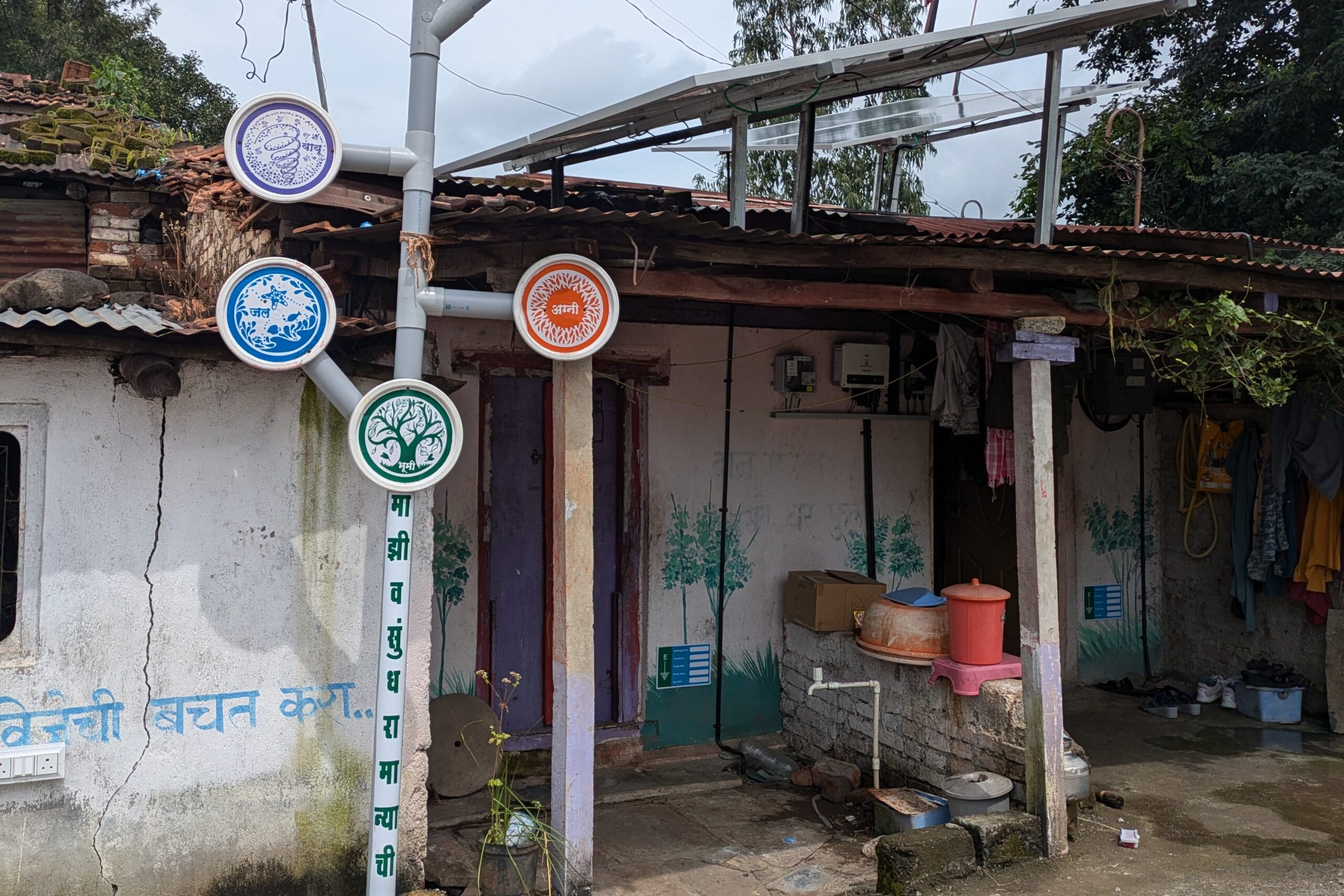

The Solar Project And Waste Management
Manyachiwadi’s solar project is almost complete. The village successfully lobbied for a special government rule change to accommodate the project, having already excelled in other environmental areas. Residents participating in the solar program pay around ₹9,000 and receive a ₹30,000 subsidy, making solar power a financially beneficial option. This initiative is moving the village closer to becoming independent of the Maharashtra State Electricity Board (MSEB). The village school, Gram Panchayat office, anganwadi, and local dairy all run on solar power, making it a true model of renewable energy. Interestingly, the Gram Panchayat office also has a free charging station for electric two-wheelers, encouraging the use of clean energy for transportation.
In 2021-22 and 2022-23, Manyachiwadi won a ₹50-lakh prize in the ‘Majhi Vasundhara’ competition, organised by the State government to encourage citizen participation in climate change initiatives.

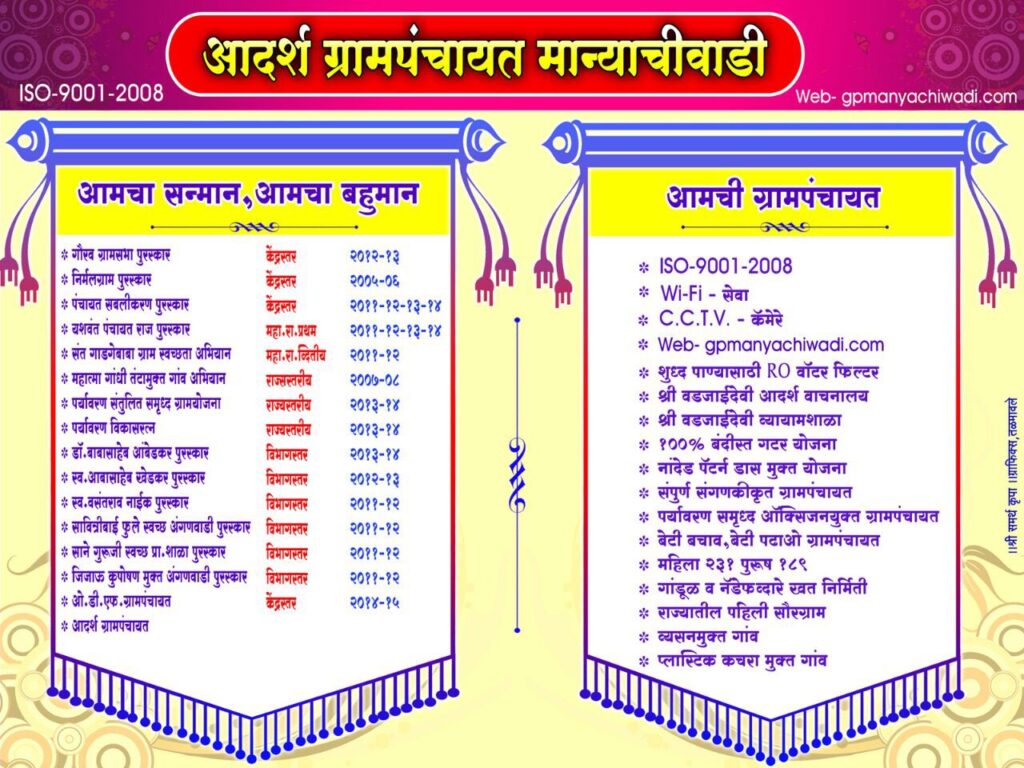
The prize money is being used for the solar project, along with a grant under the Union government’s ‘PM Suryaghar Yojana.’
Waste management in Manyachiwadi is exemplary. The village is clean, with separate bins for plastics, and minimal plastic usage. The women in the village take pride in keeping their surroundings clean, making it a daily habit. Drainage water is redirected for agricultural use, with a small tax collected for this service. Additionally, the village has a program offering ₹51,000 to households to support the marriage of their daughters, celebrating the birth of a girl child and promoting gender equality.
Water Management And Village Life
Even though the water is available 24/7, thanks to the efficient use of water from the mountain, this was not the case earlier. Water scarcity plagued Manyachiwadi up until recently. A water purifier nears the Panchayat office provides 5 liters of clean drinking water for just ₹1, allowing households to fill their containers and carry them home.
The village’s economy is primarily based on agriculture, with many households engaged in farming. Some residents also work in larger cities like Pune or Mumbai, either seasonally or permanently, to supplement their income. Interestingly, due to the village’s development, some people who had moved to cities have chosen to return to Manyachiwadi, preferring its quality of life over the hustle and bustle of urban areas.
However, nuisance wildlife, particularly a local species of monkeys that damage crops and trees, remains a challenge for the villagers.
A Day Well Spent
During our visit, we met a local women’s group from a nearby village who had come to learn about Manyachiwadi’s practices to adopt similar measures in their community. This highlighted the wider impact Manyachiwadi has had as a source of inspiration. The villagers were proud of their progress and eager for others to learn from them. My cousin, who speaks the local language fluently, helped translate and explain things to me. His insightful questions as a researcher and made him a valuable companion on this trip. The entire visit was a learning experience, showcasing how a small community can achieve big strides in sustainability.
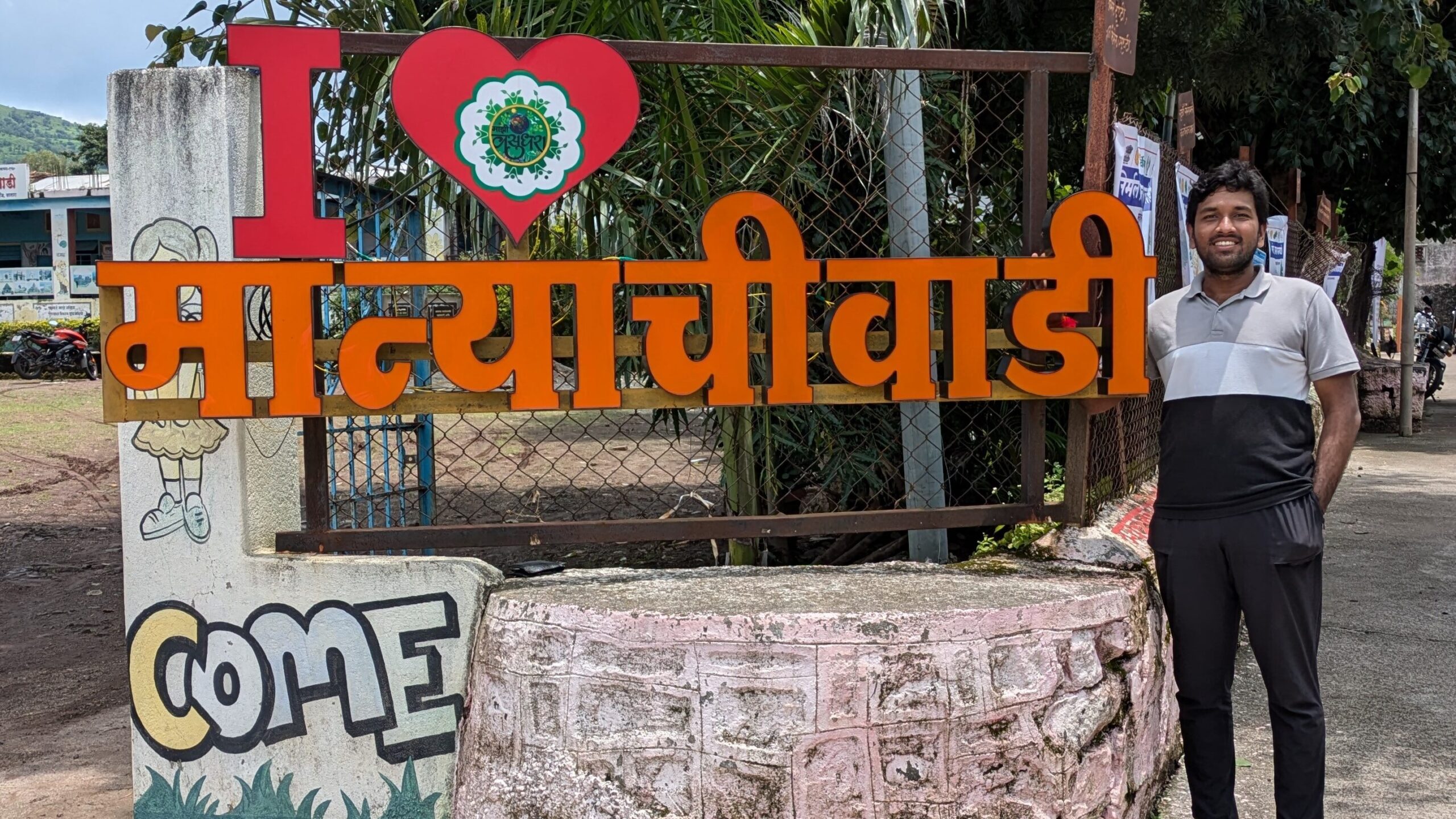
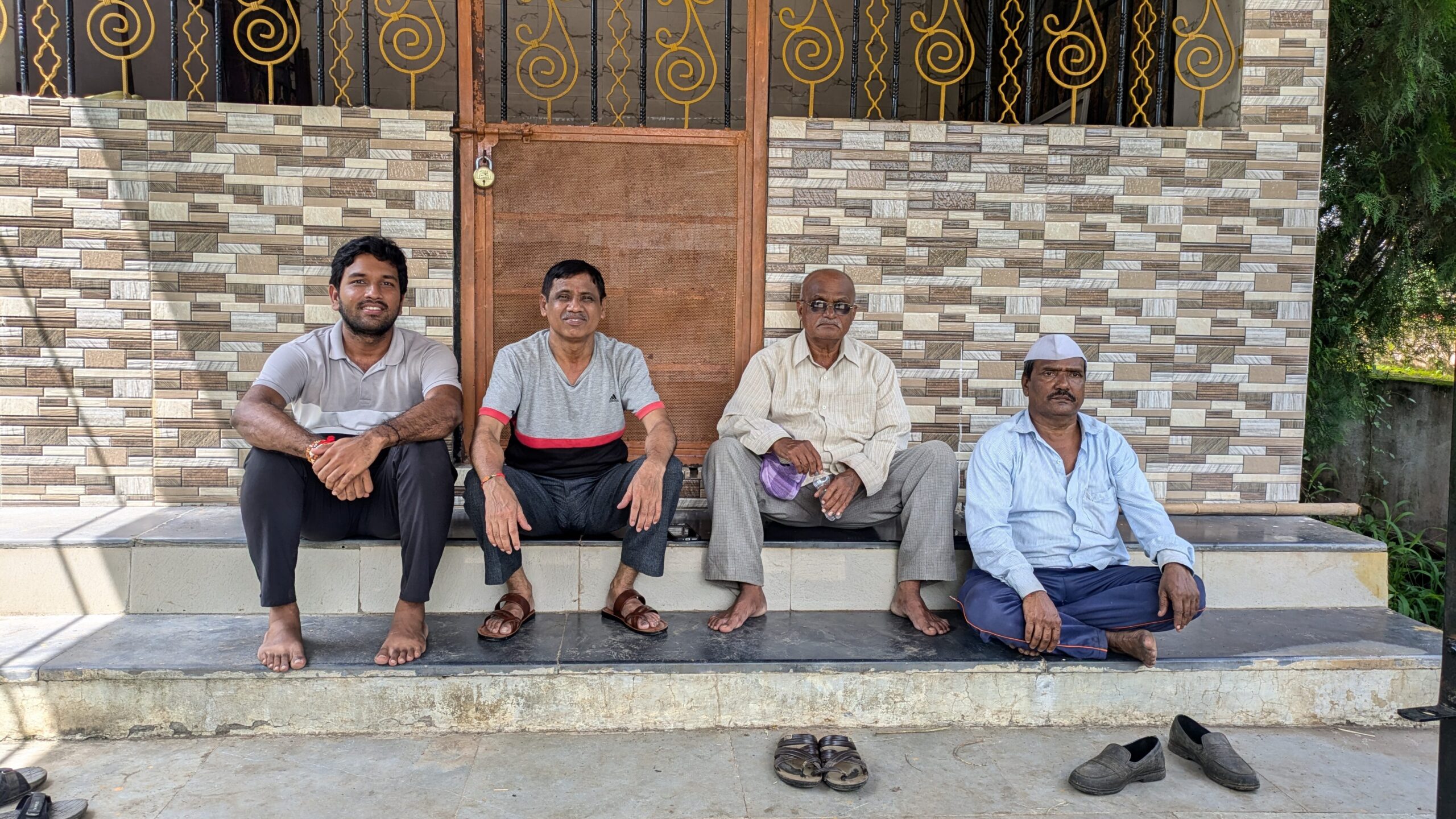
On our way back, we decided to visit the Naikba Temple in Banpuri, dedicated to our regional deity. Most of our extended family visits the temple at least once a year. When we arrived, the place was unusually quiet, as specific days are designated for worship. After spending some peaceful moments there, we headed back home, reaching around 8 in the evening. Though tired, we were deeply satisfied with the day’s experiences.
Continuing The Journey Of Sustainability
Even after winning many awards, Manyachiwadi continues to strive for excellence, regularly applying for various competitions and accolades. This spirit of continuous improvement and commitment to sustainability left a lasting impression on me. The village’s dedication to community development through innovative practices sets a powerful example for others to follow. As I reflected on our visit, I realised that Manyachiwadi is not just a village; it is a living example of what a community can achieve with a shared vision and purpose. If you are ever nearby, I highly recommend visiting Manyachiwadi. The villagers are always happy to welcome visitors and share their stories of the village’s inspiring journey.
This visit reminded me of the importance of sustainability, not just as an environmental goal but as a way of life that fosters resilience, unity, and progress. I left Manyachiwadi inspired, with a renewed appreciation for local initiatives and a desire to see more communities adopt such sustainable models for a better future.



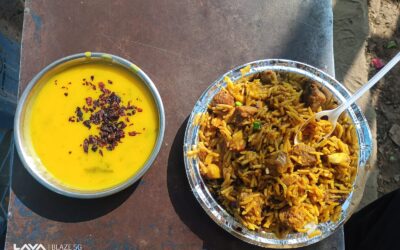
You are blessed by all the Deities of the Purushwadi.
I am a Govekar. Salute you.